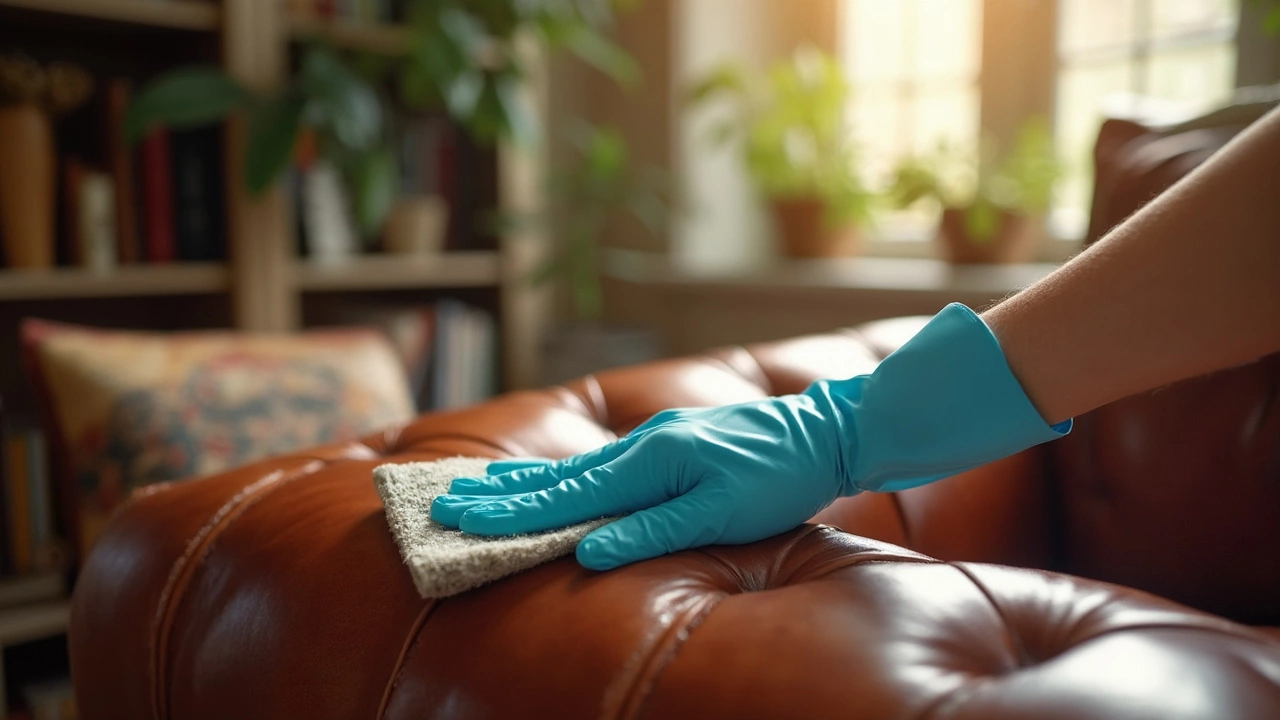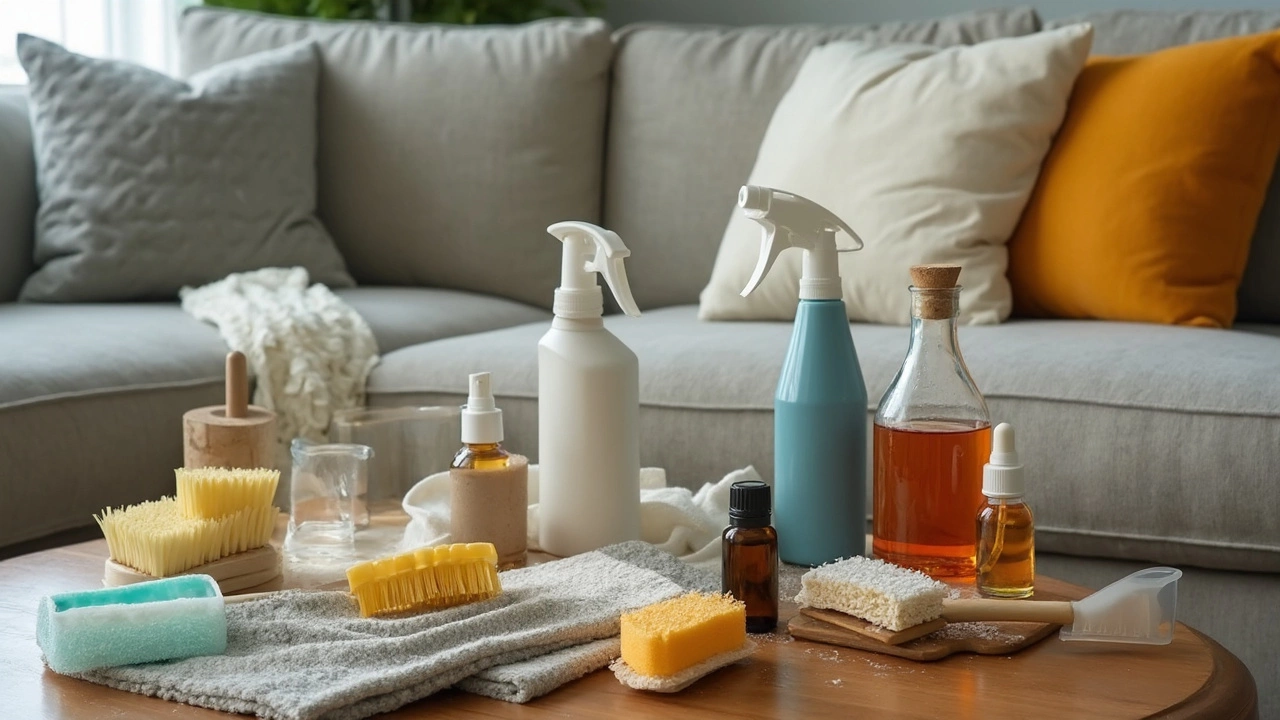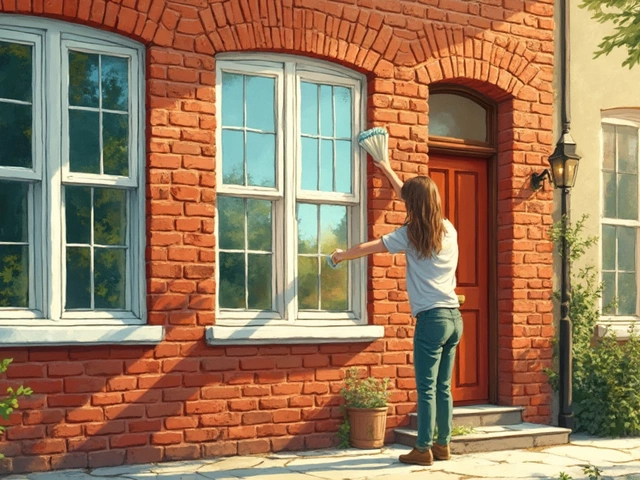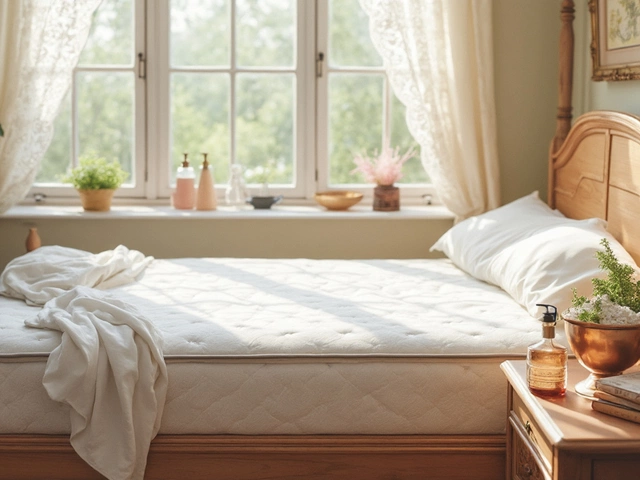Your couch sees a lot—snacks, spills, muddy paw prints, and sometimes even a full-on coffee disaster. Grabbing any old cleaner can actually make things worse, especially if you don’t know your sofa’s fabric. You’d be surprised how quickly water alone can leave those ugly rings on certain materials, or how scrubbing too hard can push stains deeper.
The first step before reaching for any cleaner? Check the tag under the cushions. Most couches have cleaning codes—like W, S, WS, or X—that tell you what products are safe. Miss that step and you might just end up with a blotchy mess nobody wants to lounge on.
Even if you can’t remember the last time the couch got more than a casual vacuuming, don’t worry. It doesn’t take expensive gear or mystery chemicals to see real results. You’ll just need some basic info, a couple of household items, and a little patience to get it looking (almost) brand new again. So, what’s the safest and most effective thing to use? Let’s clear that up, one common question at a time.
- Understanding Couch Fabrics
- DIY Cleaning Solutions vs. Store-Bought Products
- Step-by-Step Cleaning for Fabric Couches
- How to Handle Stains and Spills
- Keeping Your Couch Fresh Longer
Understanding Couch Fabrics
You can't talk about couch cleaning without getting real about what your sofa's made of. There’s a huge difference between cleaning a basic polyester couch and tackling an expensive leather sectional. Why? Because different fabrics suck up moisture, react to stains, and handle cleaning solutions in totally different ways.
Most couches fall into one of these buckets: natural fabrics (like cotton, linen, and wool), synthetic fabrics (polyester, microfiber, acrylic), and leather (natural or faux). Each one needs its own playbook when it’s time to get the crumbs and stains out.
- Natural fabrics: Think classic cotton or fancy linen. These breathe well but are big-time stain magnets and don’t always love water-based cleaners.
- Synthetics: Polyester, microfiber, and acrylic are tough and often budget-friendly. They're usually more stain-resistant, but hold on to pet hair like a magnet.
- Leather: Costs more but wipes clean easier—if you use the right stuff. Wrong cleaner? You’ll dry it out or stain it for good.
Check out the cleaning codes found on your couch’s tag. Here’s what they mean:
| Code | What It Means |
|---|---|
| W | Use water-based cleaners. |
| S | Use solvent-based cleaners (no water!). |
| WS | Water or solvent cleaners are safe. |
| X | Don’t use liquid cleaners—stick to dry brushing or vacuuming. |
Over 60% of US sofas today use some kind of synthetic or blended material because they’re easier to keep clean (according to the American Home Furnishings Alliance). That means you can usually get away with gentle soap and water, but you still have to double check that tag. Skip that step, and you could cause fading, shrinking, or rings that never come out.
Not sure what your couch is made of? Start with a patch test in a hidden area. Dab a bit of your chosen cleaner on and wait 15-20 minutes. See a weird spot? Time to rethink that product. This saves you drama, especially with vintage or delicate stuff where a mistake can’t be undone.
DIY Cleaning Solutions vs. Store-Bought Products
People often wonder if those fancy bottles at the store are actually better than what’s already in your kitchen. The truth? Both have their place, but knowing when to use each makes all the difference for couch cleaning.
DIY mixtures sound like magic, but here’s why they work. For most fabric couches, a simple mix of warm water and a few drops of dish soap tackles dirt and light stains without damage. If there’s a musty smell or pet mess, white vinegar (about a tablespoon in a cup of water) helps knock out odors and bacteria. Baking soda is another favorite: sprinkle it on the couch, wait 20 minutes, and vacuum it up to absorb smells.
- Warm water and mild dish soap: Gentle for routine cleanups.
- White vinegar and water: Great for odor control and mild disinfecting.
- Baking soda: Absorbs odors fast—perfect if your couch smells a little funky.
Store-bought cleaners can sometimes do a deeper clean, especially if you run into an intense grease or ink stain. Look for upholstery-specific sprays. They’re designed to target stains without wrecking the fabric’s color or feel. Important: Always do a spot test in a hidden area. Some cleaners can bleach or stiffen fabric, especially when used on things like velvet or certain microfiber sofas.
If your couch says “S” or “S/W” on the tag, steer clear of water and go for a solvent-based cleaner instead (these usually come as foams or sprays). And don’t trust the old “all-purpose cleaner” trick unless it specifically lists couch or upholstery use—it’s easy to end up with weird stains or faded spots that stick out like a sore thumb.
Bottom line: DIY cleaners are cheap, safe for most jobs, and handy in a pinch. Store-bought products shine for nasty or old stains but always read the label and check your couch’s care tag before you spray away. Mix and match these approaches as you go, and you’ll get results without ruining your favorite spot to relax.

Step-by-Step Cleaning for Fabric Couches
Cleaning a fabric couch at home is totally doable—you just need to tackle it in the right order to avoid spreading dirt or messing up your upholstery. Most fabric couches respond best to a mix of light vacuuming and spot cleaning, but you want to use the right products and methods for your couch’s unique care tag code.
First, grab these basics: a vacuum with a brush attachment, a couple of clean white cloths, a bucket or bowl, mild dish soap (no bleach or heavy scents), and some warm water. If your couch allows, rubbing alcohol or a solvent-based cleaner works for certain stains, but always spot-test in a hidden spot first.
- Vacuum thoroughly. Go over every surface, pressing into corners and seams where crumbs and hair love to hide. This stops you from rubbing grit into the fabric later. A 2023 survey by the American Cleaning Institute showed regular vacuuming can cut dust and allergen buildup on upholstery by over 50%.
- Mix your cleaner. For 'W' or 'WS' tags, use one teaspoon of mild dish soap in a quart of warm water. Stir until you see suds. If your tag says 'S,' stick to a solvent cleaner or alcohol-based cleaner.
- Spot-test in a hidden area. Even safe cleaners can react weirdly on certain dyes or finishes. Wipe a bit on the back or under a cushion, blot with a dry cloth, and wait 10 minutes for any changes.
- Clean the stains. Dip a white cloth into your sudsy mixture (not soaking, just damp). Gently blot stains—never scrub. For big spots, work from the outside in, pulling stains toward the center to avoid rings.
- Wipe down the rest. For an all-over clean, use a lightly damp cloth and swipe over large areas. Don’t drench the couch; you want to let it dry fast to dodge water spots or mildew.
- Dry and fluff. Point a fan at the couch or open a window. Go over the fabric with your hand or a clean brush to bring up the nap and smooth things out. You’ll have a better shot at a uniform finish.
| Code | What It Means | Safe Cleaners |
|---|---|---|
| W | Water-based cleaner OK | Soap & water |
| S | Solvent-based cleaner only | Rubbing alcohol, solvents |
| WS | Water & solvent both safe | Soap & water or solvent |
| X | Vacuum only, no wet cleaning | Vacuum |
The most important thing: don’t over-saturate the fabric. Excess water can cause mold or damage, especially in humid climates. If you run into a set-in stain you just can’t handle at home, pro upholstery cleaners have steamers and extractors that can go deeper than any DIY method. For most messes though, this approach will keep your couch cleaning game on point.
How to Handle Stains and Spills
If you spill something on your couch, speed is everything. When you catch stains early, there’s way less chance they’ll set in. Don’t waste time digging for special tools—grab what you already have on hand. Here’s the move: always blot, never rub. Rubbing pushes liquids deeper, making things worse, while blotting with a clean, dry cloth soaks up as much as possible right away.
- Stain removal basics: Use cold water (never hot, since heat can lock stains in) and a little bit of clear dish soap. Mix a couple drops with cool water, dunk a cloth in the mix, wring it out, and gently dab the spot. Work from the outside in to keep the stain from spreading.
- For greasy marks, sprinkle a thin layer of cornstarch or baking soda directly on the stain. Let it sit 15-20 minutes. Vacuum it up and repeat if needed. Both powders soak up oil and make greasy spills much easier to tackle before you start in with a cleaner.
- If your couch tag says "S" (solvent-based only), don’t reach for water. Use a bit of rubbing alcohol or special upholstery cleaner instead. Spray or apply to a cloth (don’t pour it right on the fabric), blot, and repeat as needed.
For common stains, here's a quick hit list:
- Coffee or wine: Blot right away and use a mix of dish soap and cold water. If it’s leather, use a tiny bit of white vinegar with water instead, then dry with another clean cloth.
- Pet accidents: After blotting the mess, use a 1:1 mix of white vinegar and water. Pat dry, and then sprinkle baking soda to kill any leftover smell. Just give it an hour before vacuuming up the powder.
- Ink: Dab with rubbing alcohol or hand sanitizer gel using a cotton ball. Keep blotting—don’t rub—until the ink starts to lift.
The biggest mistake? Saturating the fabric. Use small amounts of liquid, and always let the spot air dry. Aim a fan at the area if you want it to dry faster. If a stain keeps coming back, stop using home hacks and call a pro cleaner—sometimes you just need the heavy artillery.

Keeping Your Couch Fresh Longer
The big secret to a couch that stays clean isn’t fancy sprays—it’s daily habits. Dirt, sweat, snack crumbs, and pet hair build up way faster than most folks guess. If you set up a basic routine, you spend less time deep cleaning and way less cash fixing stains later.
Start with regular vacuuming. Once a week makes a huge difference. Use the upholstery attachment and go over cushions, under seat cracks, and behind pillows. You’ll pick up the gunk before it settles deep into the fabric. If you have a pet that sheds, bump it up to two or three times a week.
Sunlight is your friend, but don’t overdo it. Open up the curtains every now and then to fight bacteria and that musty smell, but avoid leaving your couch in direct sunshine all day—especially if it’s leather or brightly colored. Too much sun fades fabric and can dry out leather.
Stains aren’t the only worry. Most people forget about odors. If your couch starts smelling like last week’s pizza, try this: sprinkle baking soda straight on the fabric, let it sit for 30 minutes, then vacuum it up. It’s cheap, safe, and actually works on most upholstery.
- Use washable slipcovers if you have kids or messy roommates. They pop off for an easy wash and save the actual couch from spaghetti night disasters.
- Rotate your cushions every month. It helps them wear evenly and stay comfy.
- Don’t eat super greasy foods or drink red wine on the couch—one splash and you’re doomed.
- Keep pets off the sofa if you can. If that’s not happening, at least use a throw blanket as a cover you can toss in the laundry.
If you really want to get into the details, here’s a quick look at how often you should do these things according to cleaning pros:
| Task | Recommended Frequency |
|---|---|
| Vacuuming | Every 1–2 weeks (more if you have pets) |
| Baking Soda Deodorizing | Every 1–2 months |
| Washing Slipcovers | Monthly or as needed |
| Rotating Cushions | Monthly |
| Professional Cleaning | Every 12–18 months |
Following these habits, your couch cleaning routine won’t just be easier, your sofa will feel fresher—and last way longer than your neighbor’s.




